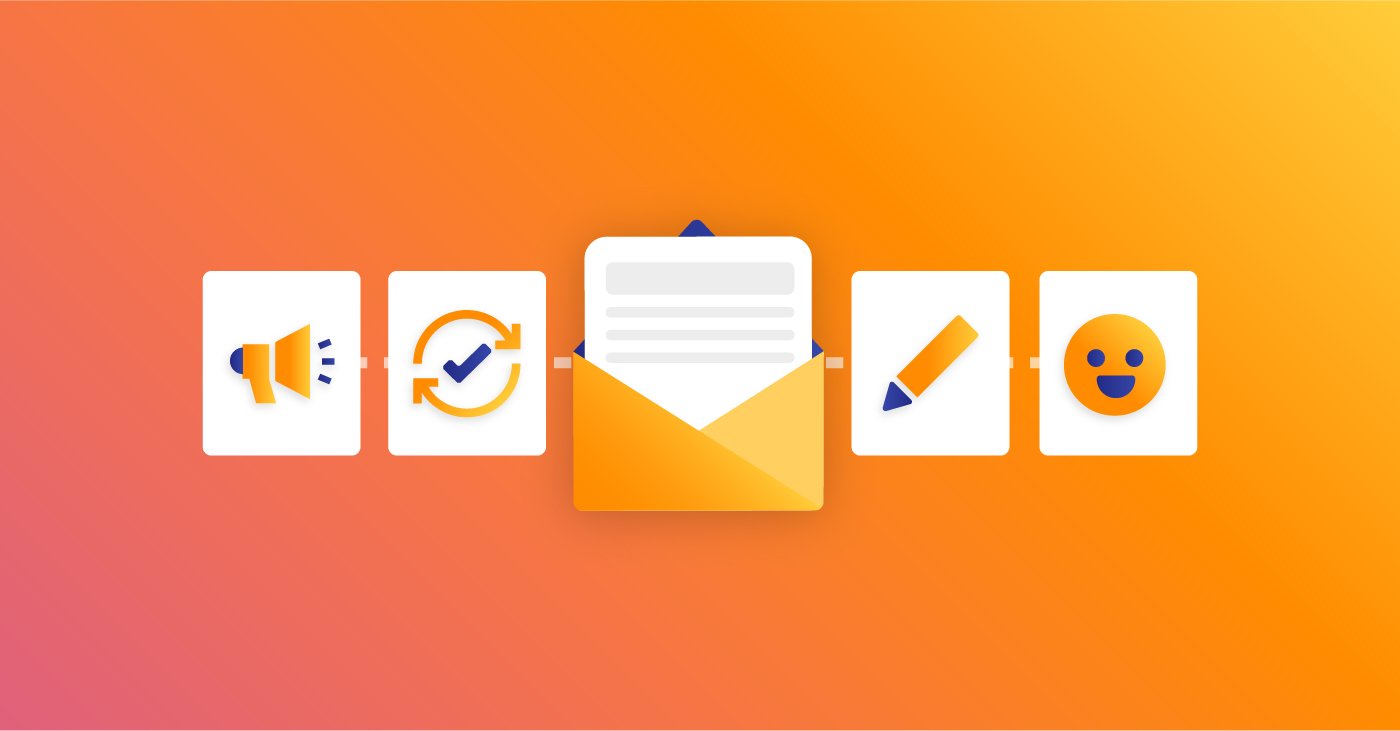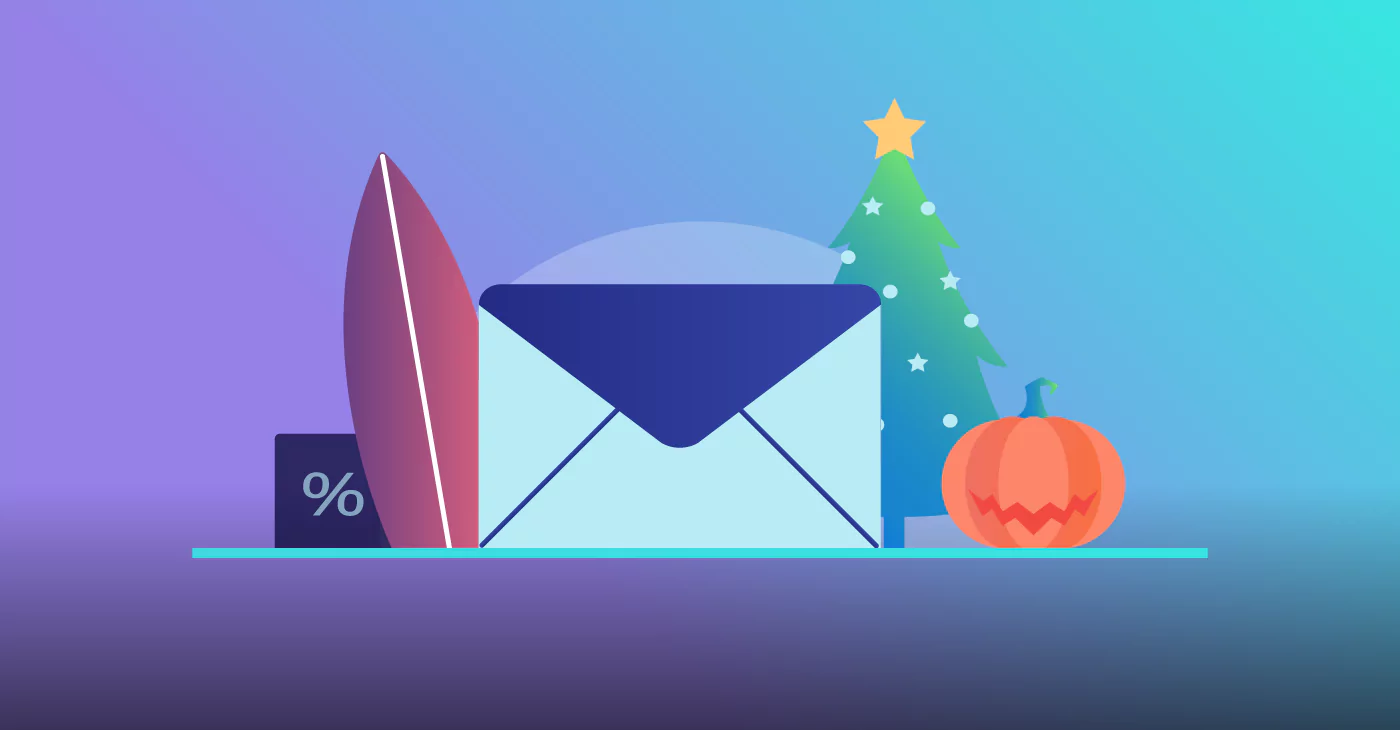8 of the Biggest Questions Regarding Email Marketing Answered
January 31, 2023 4 min read

Did you know that you can expect a return of $40 on every $1 spent on email marketing? Email marketing provides you with a direct line to your potential customers, making it a great way to reach your target audience, grow your sales, and provide tailor-made support and resources.
However, you can only achieve these great results if you approach email marketing correctly and the biggest roadblock you could face is misinformation (or a lack thereof).
Let’s demystify some of the most common questions regarding email marketing so you can become an email expert in no time.
1. What Is the Best Way To Build An Email List?
Getting your email list from a third party might seem easy, but it will get you little to no results. A third-party email list is not your target audience. Apart from the fact that you will be hard-selling to an audience that is probably not interested in your products or services, your emails will most likely end up in their spam folder, which will harm your deliverability.
Instead, focus on building your email list organically using the following.
- Create landing pages and lead magnets. These pages typically ask prospects to provide their contact information in exchange for something special. The offers commonly used are eBooks, tutorials, webinars, discounts, or guides.
- Create website forms. You can create pop-up forms and add them to your high-traffic website pages or embed forms on your homepage or blog. Similarly, these forms ask for contact information in exchange for something or encourage people to sign up for your email newsletter.
- Use targeted/retargeting ads to engage a specific demographic and encourage them to download your guide, sign up for your email marketing, or unlock a promotion.
2. What Is Email Segmentation?
Email segmentation, also known as list segmentation, divides your email list into different sub-groups using attributes like location, age, profession, gender, purchase history, income level, interests, and other factors.
It is a great way to personalize your email marketing and create relevant content for your audience, allowing your subscribers to build trust with your brand.
Stats show that marketers who use email segmentation have an increase in open rates and more clicks. If you need more data on your subscribers to start segmenting your list effectively, consider conducting surveys to gather the information you need, and don’t forget to tap into your CRM for insights.
- Email Design or Email Copy, which is More Important?
How your email looks and the message it contains both play important parts in the success of your email marketing. However, while the email design may pull your readers in and appeal to your prospects visually, the content is what convinces them to take action on your CTA.
Hence, you should pay extra attention to your email copy. We know that coming up with creative copy is challenging, but with Benchmark Email’s Smart Content, it only gets easier. You can rewrite content from previous email campaigns that have been successful or use the AI-powered tool to generate fresh content for your email campaigns.
4. How Do I Avoid the Spam Folder?
Below is a list of proven methods that will keep your emails out of the spam folder and improve email deliverability:
- Avoid sending emails to lists obtained via third-party sources.
- Ask your subscribers to add you to their email contact list or to safelist your email address.
- Provide options for contacts to unsubscribe.
- Clean your list regularly to avoid sending emails to dormant and inactive contacts
- Follow the CAN-SPAM Act to avoid being legally marked as spam.
- Personalize your email copy to your contacts to encourage email engagement.
5. How Often Should I Send Newsletters?
The frequency of your emails will depend on your subscribers, business, and activities that you have planned out. According to Keap and Databox’s survey, 13.3% of email marketers send emails daily, 33.3% weekly, 13.3% multiple times a week, 26.7% multiple times per month, and 13.3% monthly.
Pay attention to email engagement, active subscribers, and email metrics to draw insights about the frequency that your email list is comfortable with and when to send your emails out.
6. What Metrics are Vital in Email Marketing?
Email marketing metrics help you to learn how successful your email campaigns have been and what you can do to improve. While there are many email marketing metrics you can measure, the important ones to focus on are:
- Open rate
- Click-through rate
- Bounce rate
- Unsubscribe rate
- Spam reporting
7. How Long Should My Emails Be?
Email copy should be concise and straight to the point. The ideal email content should be no more than 125 words with one or two images. If you need to pack in more content, try not exceeding 200 words. Constant Contact’s study found that:
- Emails below 200 words generated higher click-through rates. Higher word counts lead to ineffective emails.
- Emails with no more than three images performed better than emails without images and emails with more than three images.
- Emails with link CTs featured at the top got more clicks.
8. How Can I Ensure My Subscribers Open My Emails?
Getting your subscribers to open your emails is a mix of different factors. Some of these are:
- Using a catchy email subject line.
- Personalizing content to email subscribers.
- Only sending emails to subscribers who have opted to be part of your list.
Email marketing is an affordable marketing channel that lets you engage your target audience, nurture, personalize, and build long-lasting relationships. We hope this information has helped answer your most burning email-related questions so you can improve your email marketing game and grow your business.
Got more questions? We’d love to answer them! Register for a free account and find out how Benchmark Email can help you reach your target audience with beautiful, high-quality emails.






